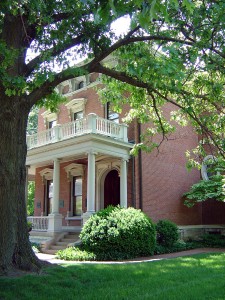
Kile oak in Irvington. Photo courtesy Vine & Branch
The best time to plant a tree was 20 years ago. The second best time is today.
Chinese proverb
Tree huggers come in all stripes, and one of the best known is Michael A. Dirr, a retired horticulture professor from the University of Georgia.
Dirr, known as the guru of trees and shrubs, travels the country looking for what he calls noble trees, large specimens that tell the stories of their existence.
He finds them on college campuses, main streets, parks, suburban yards and farm fields. He shared his adventures in January during the Indiana Green Expo meeting in Indianapolis. Landscapers, designers, growers and gardeners filled the room.
There are many reasons for praising noble trees, not the least of which is their size, shade and architecture, he said.
Trees also provide shelter and food for wildlife, support tree houses and swings, screen unsightly views, cool urban areas, span generations and enhance property values, said Dirr, author of Dirr’s Encyclopedia of Trees & Shrubs, published late last year by Timber Press.
But for Dirr, trees “are inspiring and spiritual.”

President Benjamin Harrison planted a red oak in 1875. It neatly frames his home on Delaware near downtown Indianapolis. Photo courtesy President Benjamin Harrison Home.
Indianapolis has several awesome noble trees. Among the oldest is a bur oak (Quercus macrocarpa) called Kile in Irvington. Kile oak is 300 to 400 years old and is lovingly tended by the Irvington Historical Society and Indiana Landmarks.
Downtown is Benjamin Harrison’s red oak (Quercus rubra), planted by the late president himself in 1875. It still resides at his home on Delaware Avenue, where arborists and Master Gardeners provide the care.
If you know of a big, noble tree, you can nominate it at American Forests. You’ll also find a listing of historic trees at the American Forests Website.
For most of us, the nobility of the trees we plant today won’t be realized for decades, which is why now is a good time to plant one of your favorites.